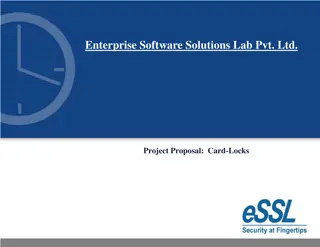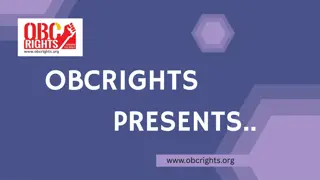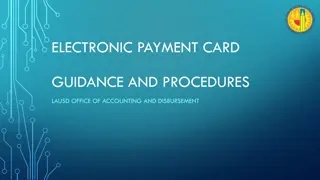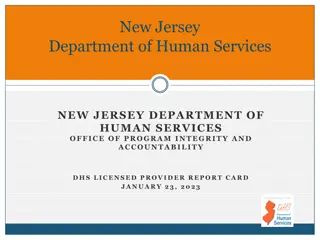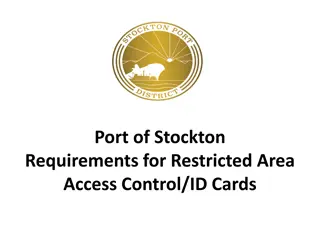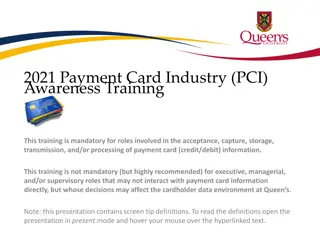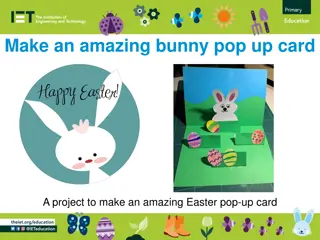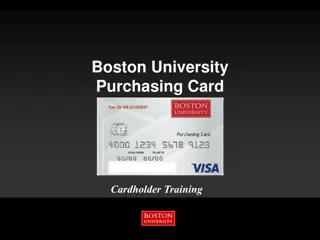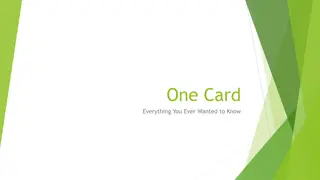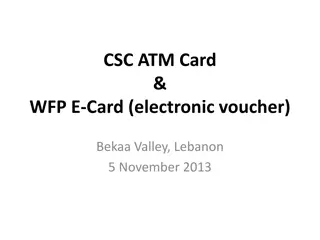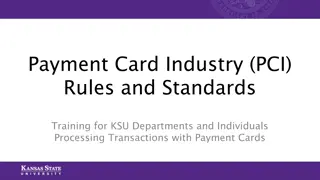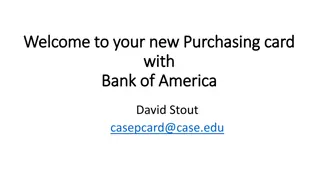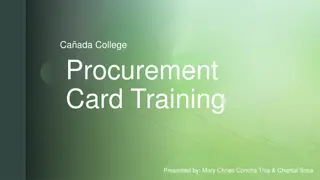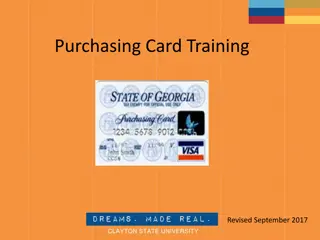STANDARDS- BASED REPORT CARD
Students with disabilities face challenges in meeting academic standards, prompting discussions on fair evaluation practices in general education classrooms. The adoption of Common Core State Standards emphasizes rigorous expectations for all students, including those with disabilities, to promote a culture of high expectations and provide necessary supports for success within the general curriculum.
Download Presentation

Please find below an Image/Link to download the presentation.
The content on the website is provided AS IS for your information and personal use only. It may not be sold, licensed, or shared on other websites without obtaining consent from the author.If you encounter any issues during the download, it is possible that the publisher has removed the file from their server.
You are allowed to download the files provided on this website for personal or commercial use, subject to the condition that they are used lawfully. All files are the property of their respective owners.
The content on the website is provided AS IS for your information and personal use only. It may not be sold, licensed, or shared on other websites without obtaining consent from the author.
E N D
Presentation Transcript
Students with Disabilities STANDARDS- BASED REPORT CARD
Who are struggling students? Struggling students are: Students with diagnosed disabilities and have an IESP Students who have a disability but did not qualify for special education - instead they have a Student Assistance Plan
Is It Fair to Use Different Standards to Evaluate Students with Disabilities in the General Education Classroom? Teachers often ask, Is it fair to the other students in the classroom to award the same letter grades and course credit to an individual who has not met the class performance standards? General educators feel strongly about teaching the content and adhering to the standards and, therefore, worry that having different standards for students with disabilities will lead to a watering down of the curriculum or a lowering of standards.
The Common Core State Standards articulate rigorous grade- level expectations in the areas of ELA and mathematics. These standards identify the knowledge and skills students need in order to be successful in college and careers. Students with disabilities must be challenged to excel within the general curriculum and be prepared for success in their post-school lives, including college and/or careers. If students with disabilities are involved in the Common Core curriculum and assessments, they will be expected to learn the same content - not less content and fewer skills.
Promoting a culture of high expectations for all students is a fundamental goal of the Common Core Standards. In order to participate with success in the general curriculum, students with disabilities, as appropriate, may be provided additional supports and services, such as: Instructional supports for learning based on the principles of Universal Design for Learning (UDL)2 which foster student engagement by presenting information in multiple ways and allowing for diverse avenues of action and expression. With appropriate classroom and testing accommodations in place, students with disabilities will be evaluated on the same standards as the students without disabilities.
Therefore, how these high standards are taught and assessed is of the utmost importance in reaching this diverse group of students. In order for students with disabilities to meet high academic standards and to fully demonstrate their conceptual and procedural knowledge and skills in mathematics, reading, writing, speaking and listening (English language arts), their instruction must incorporate supports and accommodations.
Including: Supports and related services designed to meet the unique needs of these students and to enable their access to the general education curriculum. Instructional accommodations changes in materials or procedures which do not change the standards but allow students to learn within the framework of the Common Core. Assistive technology devices and services to ensure access to the general education curriculum and the Common Core Standards.
ACCOMMODATIONS Change how a student accesses information and demonstrates that he/she has learned the information How
Accommodations dont lower the expectations Change how the student learns, not what he/she learns. For example, if a student has trouble with writing, the teacher might let him give answers to a test verbally. This does not change the test the student is taking. It changes the way he/she demonstrates what he/she knows. There are four different types of accommodations. Presentation: A change in the way instructions and information are presented. Example: Letting a student listen to audio books instead of reading a text. Response: A change in the way a child completes assignments or tests. Example: Allowing a student to give spoken answers instead of written ones. Setting: A change in the environment where a child works. Example: Allowing a child to take a test in a separate room with fewer distractions, or in smaller group. Timing and scheduling: A change to how much time a child has to complete a task, or being allowed to take breaks. Example: Providing extra time on tests for a child. They don t change what students are taught or tested on. Instead, they support students ability to learn well in the classroom and show their knowledge on tests by removing obstacles.
Accommodations Accommodations are adjustments - make sure students have equal access to curriculum and a way to be successful Level the playing field Defined in a student s IESP Students with disabilities are expected to meet the same standards set for all students. e.g., Students with LD can learn the same material as others in the class but in a different way. A child with delayed reading skills can participate in class discussions about a novel if he/she listened to the audio tape version of the book.
Modifications CHANGE the way the curriculum is delivered and the instructional level either taught something different from the rest of the class or taught the same information but at a different level of complexity WHAT
Modifications mean The curriculum and/or instruction have changed. When modifications are made, students with disabilities are not expected to master the same academic content as others in the classroom. e.g., A fifth-grade student with a severe math disability who isn t ready to learn fractions and decimals may still be working on addition and subtraction. This means that his/her instructional level has changed significantly from that of others.
Differentiated Instruction Affirming that students have different learning needs, strengths, styles, interest and preferences Increasing the variety in teaching, learning and assessment in order to reach more students Recognizing that all students do not have the same needs to do the same work in the same way Nurturing students abilities to make appropriate choices about how to learn and how to best present what they have learned Using flexible instructional grouping to provide opportunities for students to learn with others who have similar needs, styles, or preferences Creating fair and equitable processes for evaluating student learning and assigning grades
Scaffolding Temporary support for students Better understanding of the content Independence as a learner Can include instructional strategies, tools, materials, additional teaching, checklists, models, diagrams, organizers
Examples of Scaffolding Provide reading materials at the student s reading level Pre-teach vocabulary Provide instructions in multiple forms(orally & written) Model what needs to be done Small group instruction targeted instruction/practice Use graphic organizers or templates Distribute timelines for work completion Give explicit feedback on next steps of learning Connect content with student interests Break work into smaller parts
Tiered Assignments Equally active Equally interesting and engaging Fair in terms of work expectations and time needed Requiring the use of key concepts, skills, or ideas
Completing a Character Map Tier 1 (Low) Describe: How the character looks What the character says How the character thinks or acts The most important thing to know about the character Tier 2 (Middle) Describe: What the character says of does What the character really means to say or do What goals does the character have What the character would mostly like us to know about him or her What changes the character went through Tier 3 (High) Describe: Clues the author gives us about the character Why the author gives these clues The author s bottom line about this character
After whole group class reading of a current events issue in Time For Kids magazine on global warming, students complete a related activity differentiated by complexity. Tier 1 Tier 2 Tier 3 Students are asked to write a public service announcement using jingles, slogans, or art to convey why global warming is a problem and what people can do to prevent it Students conduct a survey of peer awareness and understanding of global warming. They design a limited number of questions and decide how to report their results such as with charts or in a newscast. Students debate the issue about the seriousness of global warning, each side expressing a different viewpoint. They must provide credible evidence to support their opinions and arguments.
Students all use the same materials, but what they do with the materials is different. Example: Pattern block math Tier 1 Tier 2 Tier 3 Identify all the ways you can group your pattern blocks. Identify all the different patterns you can make with your pattern blocks. Create a bar graph to show all the different kinds of pattern blocks in your bag.
Students work on the same outcomes, but use a different process to get there. Example: What are the characteristics of a hero? Tier 1 Tier 2 Tier 3 Make a chart of specific heroes and what they did to make them a hero. Chose two or three heroes and compare them in a Venn diagram. List personal characteristics exhibited by heroes and rank them from most to least important.
Groups are formed based on learning preferences, using Gardner s multiple intelligences. Example: For a unit on the solar system, study of rotation and revolution of the earth. Tier 1 Tier 2 Tier 3 Create a flip book, diagram, or model showing the rotation of the earth around the sun (visual-spatial) Position and move three people to demonstrate the concept of revolution and rotation of the earth with respect to the moon and sun. (bodily-kinesthetic) Make a timeline of a year detailing the position of the New Hampshire with respect to the sun. (logical-mathematical)
Math 5.OA.A.2 Write simple expressions that record calculations with numbers, and interpret numerical expressions without evaluating them. Directions: Please write the missing numerical expression or missing word problem for each blank. Numerical Expressions Directions: Circle the expression that matches the words. (Tier 1) 11. Ms. Smith catches 25 fish. Then she releases 10 fish and catches 8 more. ______________________________________________________________ 1. Theresa has 18 worms. She gave 4 worms to Jimmy and 3 worms to Jaime. (18 - 4) + 3 18 (4 + 3) 2. Rick had $8. He then worked 4 hours for $5 each hour. $8 + (4 x $5) ($8 + 4) x $5 12. 25 (10 +8 ) _________________________________________________________________ 13. Bob catches 15 fish and lets 6 fish go. ________________________________________________________________ Directions: Write words to match the expression. 3. 34 7 ________________________________________________ 4. 6 x (12 4) ____________________________________________ 5. 36 9 ________________________________________________ 6. 35- (16 + 11) __________________________________________ 14. 3 x (15 6) _________________________________________________________________ 15. Write a word problem for an expression that is three times as great as (15 + 7). Then write the expression. ______________________________________________________________________ ______________________________________________________________________ ______________________________________________________________________ ______________________________________________________________________ ______________________________________________________________________ Directions: Write an expression to match the words. 7. Elena shared 12 party favors equally among 6 friends. ________________________________ 8. Braden has 14 baseball cards. He finds 5 more baseball cards. _________________________ 9. Isabella bought 12 bottles of water at $2 each. _____________________________________ 10. Monique had $20. She spent $5 on lunch and $10 at the bookstore. ___________________
Math 5.OA.A.2 Write simple expressions that record calculations with numbers, and interpret numerical expressions without evaluating them. Numerical Expressions(Tier 2) Directions: Circle the expression that matches the words. Directions: Please write the missing numerical expression for each word problem provided. 11. Ms. Smith catches 25 fish. Then she releases 10 fish and catches 8 more. 1. Theresa has 18 worms. She gave 4 worms to Jimmy and 3 worms to Jaime. (18 - 4) + 3 18 (4 + 3) 12. Nick has 25 pens. He gives 10 pens to one friend and 8 pens to another friend. 2. Rick had $8. He then worked 4 hours for $5 each hour. $8 + (4 x $5) ($8 + 4) x $5 13. Bob catches 15 fish and lets 6 fish go. Directions: Write words to match the expression. 3. 34 7 ____________________________________________________ 4. 6 x (12 4) ________________________________________________ 5. 36 9 ____________________________________________________ 6. 35- (16 + 11) ______________________________________________ 14. Steve catches 15 fish and lets 6 fish go for three days in a row. Directions: Write an expression to match the words. 7. Elena shared 12 party favors equally among 6 friends. ____________________________________________________________ 8. Braden has 14 baseball cards. He finds 5 more baseball cards. ____________________________________________________________ 9. Isabella bought 12 bottles of water at $2 each. ____________________________________________________________ 10. Monique had $20. She spent $5 on lunch and $10 at the bookstore. ____________________________________________________________
Math 5.OA.A.2 Write simple expressions that record calculations with numbers, and interpret numerical expressions without evaluating them. Numerical Expressions( Tier 3 ) Directions: Write words to match the expression. Directions: Write an expression to match the words. 4. Vanessa shared 12 party favors equally among 6 friends. _____________________________________________________________ 6 x (12- 4) 5. Isabella bought 12 bottles of water at $2 each. _____________________________________________________________ Think: Many word problems involve finding the cost of a store purchase. 6. Braden has 14 baseball cards. He finds 5 more baseball cards. ______________________________________________________________ Step 1: Examine the expression. What operations are in the expression? __________________________________________ Directions: Write words to match the expression. 7. 34 7 ________________________________________________________________ Step 2: Describe what each part of the expression can represent when finding the cost of a store purchase. What can multiplying by 6 represent? ___________________________________________ 8. 8 4 _________________________________________________________________ Step 3: Write the words Michael buys 6 CDs. Each CD costs $12. If Michael receives a $4 discount on each CD, what is the total amount of money Michael spends? Directions: Please cut out the numerical expressions. Find the word problem that matches the numerical expression. Glue the numerical expressions in the chart. 9. Ms. Smith catches 25 fish. Then she releases 10 fish and catches 8 more. 1. What is multiplied and what is subtracted? ________________________________________________________________ 2. What part of the expression is the price of the item? ________________________________________________________________________ 25 ( 10 +8) (25- 10) + 8 3. What can subtracting 4 from 12 represent? ________________________________________________________________
Students with Disabilities Q: How do we fairly assess a child who is progressing below grade level? Assess students in ways that can demonstrate their knowledge of the content area, not their reading disability.
SETSS/ Resource Room If a student completes an assignment with the SETSS teacher or resource room teacher: Is the assignment assessed any differently? Answer: NO Should it receive a modified grade? Answer: NO IDEA IESPResource Room (specific testing accommodations)
Progress Reports for IESPs Specialists (SETSS, Speech, PT, OT, Counseling) provide the progress reports for students with IESPs. IESP goals identify specific areas of need in which a student will receive specially designed instruction in order to access and progress in the general curriculum. When a student receives special education services, specialists are required to report on the student s progress toward mastery of IESP goals; however, this is a separate and distinct requirement from assigning course grades, as IESP goals are not the same as course content.
Effort & Conduct Students should not be penalized for having a disability A student s disability should not be mistaken for a lack of effort Be familiar with the IESP- strengths and weaknesses; build through strengths Frequent communication with parents especially if medication is involved allows for better monitoring and feedback to professionals (i.e., Connors checklist to monitor medications for symptoms of ADHD)
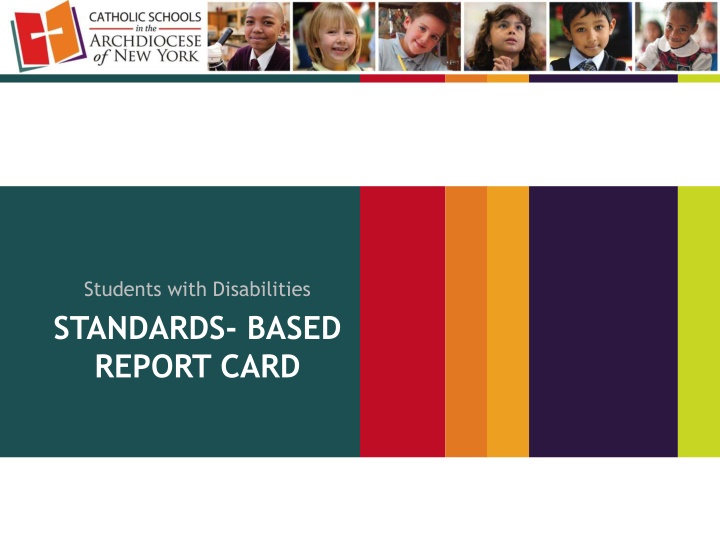


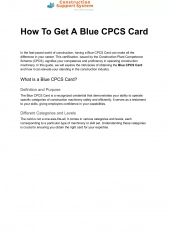
![Guardians of Collection Enhancing Your Trading Card Experience with the Explorer Sleeve Bundle [4-pack]](/thumb/3698/guardians-of-collection-enhancing-your-trading-card-experience-with-the-explorer-sleeve-bundle-4-pack.jpg)
